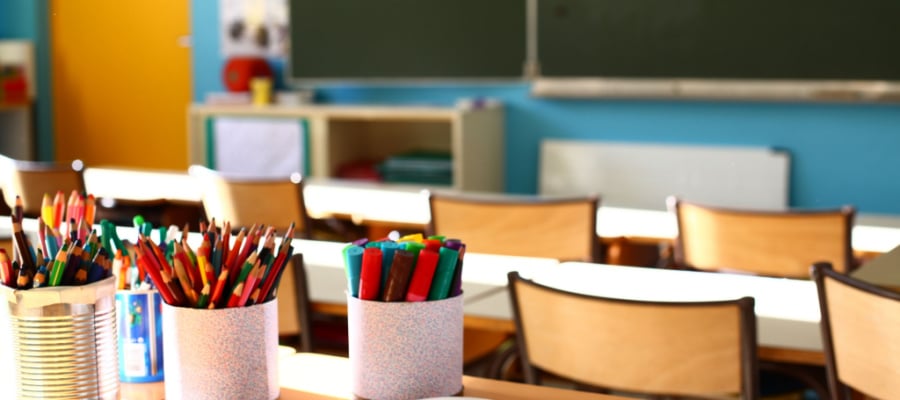BC private schools to collect $491 million in public funding this year

Private schools will collect nearly half a billion dollars in public funding from the provincial government during this school year in British Columbia. This is in addition to further public subsidies to private schools—including elite prep schools—in the form of various tax exemptions and credits.
Provincial operating subsidies to the private school system will rise to $491 million this year, which is more than double the funding level in 2000/01 in inflation-adjusted terms. This far outstrips the rate of growth in funding to public K-12 education over the same period of time. In contrast, half of the provinces in Canada, sensibly enough, don’t provide this type of public funding to private schools at all.
The bulk of the private school subsidies in BC flow to two major categories: first and foremost, religious schools, and, second, high-tuition elite prep schools. This public subsidy is allocated using a formula that provides funding at a rate of either 50% or 35% of per-student funding in the public school system (depending on tuition level and overall outlays that private school spends per student).
Additional forms of public subsidy for private schools include property tax exemptions, tax breaks on donations and tuition, and even a child care tax credit on a portion of tuition attributed to recess and lunch, a tax advantage that prep schools like St. George’s have promoted to their clientele.
Do most British Columbians want public resources directed to the private school system? The answer, perhaps not surprisingly, is no. Repeated public opinion polls have found that about two thirds of British Columbians oppose public funding for private schools, with this number rising to four in five opposed in the case of elite prep schools.
Half of the provinces in Canada don’t provide this type of public funding to private schools.
Even as subsidies flow to private schools, funding for public schools has fallen short while educators struggle to do more with less. Inadequate funding for students with special educational needs is one of the most glaring gaps in public schools today. As analysis from the BC Teachers’ Federation shows, special education funding from the province only covers about two thirds of school districts’ actual special education spending, a shortfall that “creates austerity pressures to ration special education services at the district level and results in the redirection of funds from other areas with their own pressing needs.”
Going back at least two decades, public schools have endured chronic underfunding, ripping up of teachers’ contracts, school closures, and expansion of class sizes under the previous BC Liberal provincial government. Teacher shortages and recruitment challenges are another long-standing problem that has only been exacerbated by the pandemic. Given BC has among the lowest starting salaries for teachers in the country, about eight thousand dollars lower than in Alberta, this is no surprise.
BC’s educators have accomplished a remarkable amount under these circumstances, but there is a cost to pay for underfunding. There is an urgent need to reinvest in our public schools now and fix the broken provincial funding formula, especially as it relates to special educational needs. Few things are more important to a society’s long-term success than a strong and inclusive public education system.
BC has more than enough economic and fiscal capacity to make that reinvestment. We’re an extremely rich province, but an increasingly unequal one. Taking half a billion dollars in taxpayer funding to private schools and redirecting it to the public system is one measure that could help. This represents about 7% of the total provincial funding levels to public schools and 69% of earmarked special education funding.
Private school backers claim that public savings from the withdrawal of subsidies will be less than that as some students move back into the public system. That may be so, however, there is no straightforward relationship between private school enrolments and public subsidy levels. For example, Alberta has higher private school subsidy rates than BC but lower enrolment levels. Regardless, if there was a trend of private school students returning to public classrooms after the withdrawal of subsidies, that’s all to the good. A strong, universal public education system can be one of the great equalizers in our society.
Few things are more important to a society’s long-term success than a strong and inclusive public education system.
One obvious place to start a phaseout of public funding to private schools would be the high-tuition prep schools classified as “Group 2” under the province’s funding rubric. Group 2 schools alone account for more than 10% of private school subsidies.1
Group 2 consists largely of elite prep schools like Vancouver’s St. George’s, which charges tuition fees of $29,600 per year for “day school” students (rising to over $60,000 per year for boarding students). This is just one of more than two dozen publicly subsidized private prep schools, among them Crofton House School ($27,200), West Point Grey Academy ($26,860), Stratford Hall ($28,670), York House School ($26,250) and Shawnigan Lake School ($33,205).
Public schools have been underfunded for far too long in this province and students, including those with special educational needs, are not receiving the resources they need. The good news is BC has every ability to close the funding gap and reinvest in public education. Rather than continuing to massively subsidize private schools, these resources should be redirected to building stronger public schools for all.
Notes
1. To be conservative in this calculation, I’m excluding the more complex cases of a small number of special education-focused private schools and First Nations schools, some of which are also technically included in Group 2 category under the provincial rubric. We’ll assume that under a phaseout of public funding to private schools, all the funding currently going to special needs-focused private schools (in both Group 1 and Group 2) and First Nations independent schools (in Group 2) is maintained. These more complex cases represent only 5% of the overall $491 million provincial funding envelope.
Topics: Children & youth, Education


